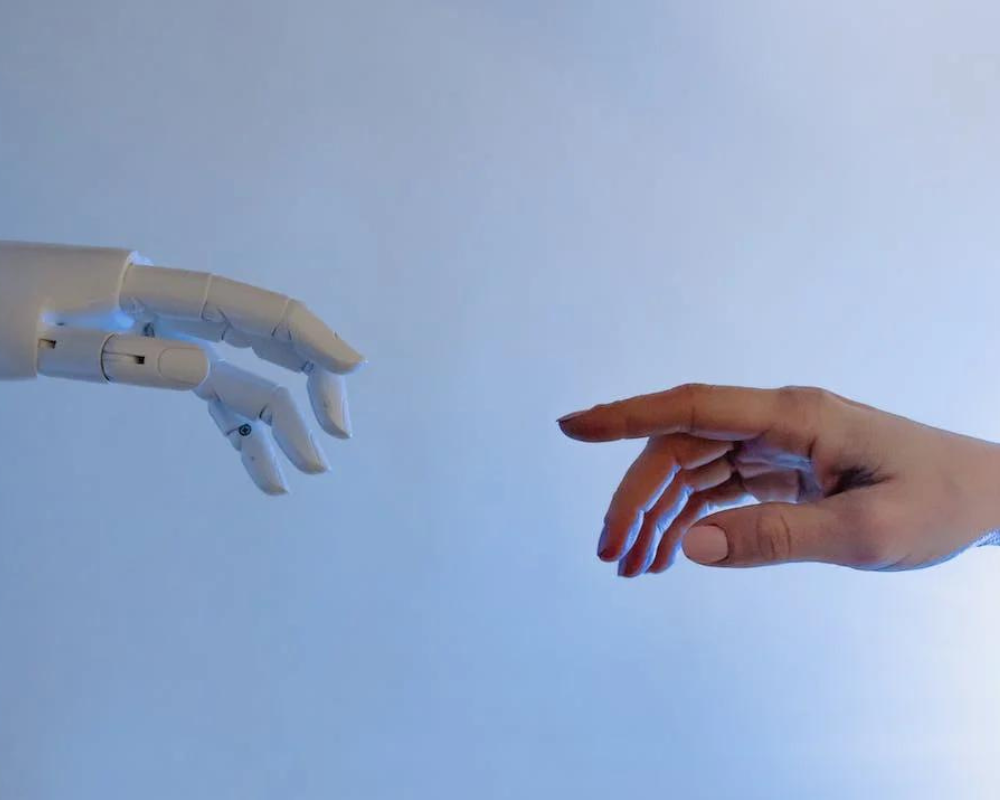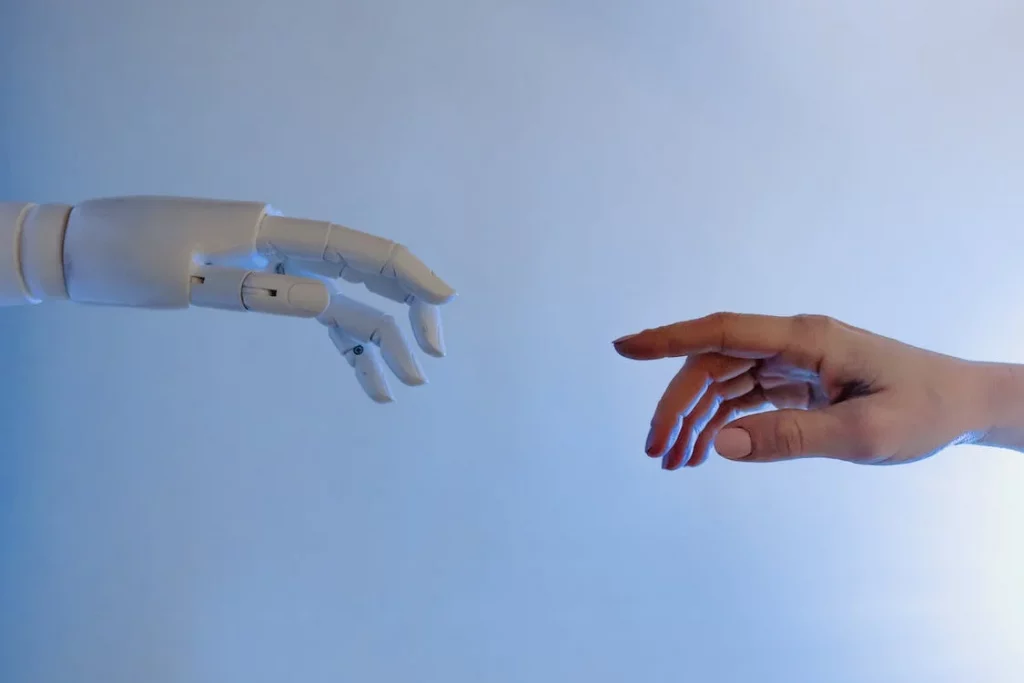L’industrie 5.0 est sur le point d’inaugurer une nouvelle ère, marquée par des améliorations importantes en termes de travail et de technologies utilisées. Alors que nous sommes encore immergés dans la quatrième révolution industrielle, le futur de l’industrie se dessine lentement mais sûrement.
On parle déjà de l’industrie 5.0, qui apporte une nouvelle façon de concevoir le rapport entre les machines intelligentes et les humains.
Dans cet article, nous vous proposons un retour sur les grandes périodes qui ont marqué l’industrie ainsi qu’un aperçu de ce qui nous attend avec l’industrie 5.0.
Industrie 1.0 – L’ère de la vapeur et du charbon
Datant des années 1760, la première révolution industrielle marque un tournant important dans l’Histoire. En effet, cette période correspond à la transition de l’artisanat classique vers de nouveaux procédés de fabrication. Les nouvelles sources de carburant telles que la vapeur ou le charbon ont accéléré l’adoption des machines.
Ce bouleversement a permis de produire des biens en plus grandes quantités, notamment dans l’industrie textile où les machines généraient un rendement jusqu’à huit fois supérieur à ce que l’on pouvait obtenir à la main. La première révolution industrielle est aussi synonyme de nouveaux modes de transport comme le bateau et la locomotive à vapeur.
Industrie 2.0 – Le bouleversement historique
C’est au XIXe siècle que des découvertes majeures viennent bouleverser les processus de fabrication existants. L’électricité, le gaz et le pétrole sont les nouvelles sources d’énergie qui alimentent les usines de production.
La seconde révolution industrielle a notamment abouti à la création du moteur à combustion. On note aussi le développement du commerce de l’acier, la synthèse chimique et les moyens de communication tels que le télégraphe et le téléphone.
Enfin, les inventions de l‘automobile et de l’avion au début du XXe siècle sont la raison pour laquelle, à ce jour, la deuxième révolution industrielle est considérée comme la plus importante.
Industrie 3.0 – La révolution informatique
Vers 1970, la troisième révolution industrielle implique l’utilisation de l’électronique et de l’informatique (technologies de l’information), ce qui permet d’automatiser une partie des chaînes de production. Certains robots programmables sont désormais capables d’effectuer toutes sortes de tâches, sans qu’une intervention humaine ne soit nécessaire. Par conséquent, les modes de fabrication progressent considérablement, et cela s’accélère grâce à l’accès à Internet au sein des usines.
Cette période est aussi marquée par le recours aux énergies renouvelables. En effet, une partie de la troisième révolution industrielle se base sur la transition énergétique, délaissant ainsi le charbon au profit de sources d’énergie plus propres.
Industrie 4.0 – Le monde actuel
La quatrième révolution industrielle est l’ère des machines de production intelligentes, capables d’échanger des informations, de déclencher des actions et de se contrôler de manière autonome sans intervention humaine.
Cet échange d’informations est rendu possible grâce à l’Internet industriel des objets (IIoT) tel que nous le connaissons aujourd’hui. L’industrie 4.0 se caractérise notamment par :
- Le recours à des systèmes cyberphysiques, c’est-à-dire des algorithmes informatiques qui permettent de contrôler un parc de machines.
- L’Internet des objets (IoT) : des réseaux interconnectés de machines et de véhicules dotés de capacités de détection, de numérisation et de surveillance informatisées.
- Le Cloud computing, autrement dit, l’hébergement et la sauvegarde des données en dehors du site de production.
- L’Informatique cognitive – plates-formes technologiques qui utilisent l’intelligence artificielle.
À lire à ce sujet : Industrie 4.0 : Comment assurer la compétitivité des usines intelligentes en France ?
Industrie 5.0 – L’industrie de demain
À peine 10 ans après l’apparition du terme “industrie 4.0”, l’industrie 5.0 pointe déjà à l’horizon, définissant les challenges que devront relever les usines de demain grâce aux progrès qu’elle apporte.
Si l’industrie 4.0 met l’accent sur la transition vers des usines intelligentes, portées par l’échange de données, l’industrie 5.0 devrait, quant à elle, recentrer l’attention sur l’humain.
Alors, quelles différences l’industrie 5.0 propose-t-elle par rapport à l’usine telle que nous la connaissons aujourd’hui ?
Premièrement, l’industrie 5.0 met en avant une vision plus éthique, intégrant des facteurs tels que la durabilité, l’environnement et les aspects sociaux. Dans l’industrie 5.0, plutôt que de baser la stratégie d’entreprise sur une logique de performance de production, ce sont les humains qui seront la pierre angulaire de la compétitivité de l’usine.
Ensuite, l’industrie 5.0 envisage des usines de demain équipées de technologies conçues pour aller plus loin dans l’amélioration des conditions de travail, telles que des détecteurs de fatigue mentale et physique sur le poste de travail.
Enfin, dans le cadre de l’industrie 5.0, la prise en compte de l’environnement devient un enjeu primordial. On peut envisager de nouvelles méthodes de valorisation des déchets, l’utilisation d’énergies renouvelables ou encore l’intégration de capteurs permettant de réduire les consommations énergétiques.
Ainsi, l’industrie 5.0 peut être caractérisée par :
- La volonté de soutenir, et non de remplacer les humains
- La recherche d’un équilibre entre productivité et efficacité
- Une approche permettant de minimiser l’impact environnemental
En résumé
Du fait de l’accélération des innovations technologiques, les révolutions au cœur de l’industrie pourraient se succéder rapidement au cours des 10 prochaines années et au-delà. Alors que les trois premières révolutions industrielles ont mis des décennies à se concrétiser, les révolutions d’aujourd’hui ne durent que le temps qu’il faut pour qu’elles soient adoptées par une majorité.
Le développement de l’Industrie 5.0 est plus une mise à niveau de l’industrie 4.0 plutôt qu’une révolution à part entière. À mesure que l’intelligence artificielle s’améliore et que les robots deviennent de plus en plus autonomes, l’interaction entre les ordinateurs, les robots et les humains devrait se préciser et permettre un renouveau et améliorer l’attractivité pour les métiers industriels.

